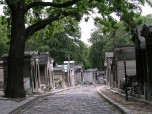Le Jardin des Tuileries is also known as the Tuileries Garden. It is a very popular public park and garden in Paris, France. It is situated right in the center of the city, between the Musée du Louvre and the Place de la Concorde. It is close to all of the major attractions in Paris.
Many tourists from around the world visit this park every year. The garden area is small, but is ornately decorated with fountains and sculptures that have historical importance. The collection is very impressive and features sculptures by many prominent names such as Jean Dubuffet, Coysevox, Giacometti and Rodin. The oldest artwork goes as far back as the eighteenth century and are located within the Place de la Concorde portion of the park.
Tuileries covers about twenty-five hectares of land. All of the garden is carefully arranged to add important element to the park. There are many lovely terraces and also several artificial ponds that are perfectly maintained. Many of them are hidden by the shadows of older chestnut and elm trees. In addition to the smaller ponds, the park also has two large lakes, the Bassin Octogonal and the Bassin Rond.
Jardin des Tuileries History
In the last half of the sixteenth century the widow of France’s King Henry II, Catherine de’ Medicis, commissioned the construction of a new palace in Paris. She also had an Italian Renaissance garden built that reminded her of Florence, her birthplace. The garden featured many fountains, a grotto and a labyrinth. The mansion was named the Tuileries, which is the French term for tile. The area had been previously occupied by many workshops that made tiles.
In the seventeenth century King Louis XIV made the Tuileries Palace his residence while he waited for the Palace of Versailles to be built. In 1664, a large modern garden was developed for the Tuileries. After the king moved to the Palace of Versailles, the Tuileries was turned into a beautiful public park.
The Tuileries Palace burned down during the Paris Commune of 1871. However, much of Le Jardin des Tuileries was not ruined, though some parts were rebuilt. In its current form, the Tuileries maintains most of its original design. The interesting arrangements of its main alley still represent the character of the historical Grand Siècle or Great Century, and it continues to be enjoyed by guests.
Museums in the Park
Currently, the western section of the garden contains two important museums. The first one is the Musée de l’Orangerie. It is located in the old greenhouse building that was designed by Firmin Bourgeois, in 1852. The second museum is the unique Gallery of Jeu de Paume and it features visual arts presentations, such as innovative electronically or mechanically generated images, as well as traditional photography. This museum building was originally an army storehouse, and in 1927, it was transformed into a new gallery for the public.
Le Jardin des Tuileries offers guests a very beautiful view of central Paris. All of the charming surroundings in the park are enjoyed by thousands every year. There also is an alley that is lined with many interesting sculptures that connects the park to the nearby Jardin du Carrousel. The Jardin des Tuileries is considered by many to be one of the most beautiful settings in the world.








































